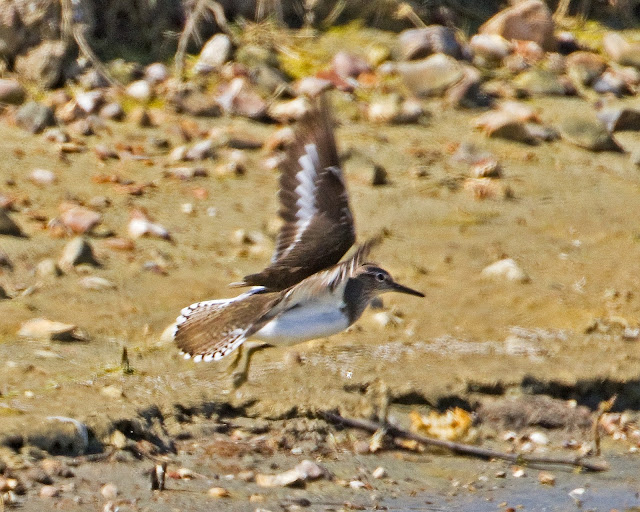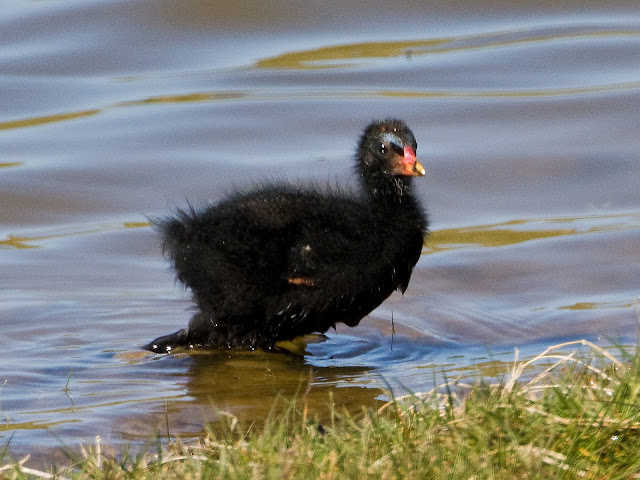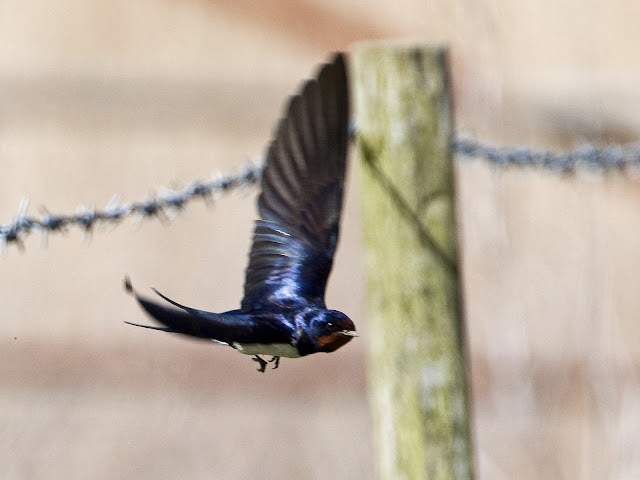With the small car park in Easton Lane now open, the Stilt Pools at Medmerry seem a little more accessible, but it can still be a bleak walk in when the cold south westerlies are coming in off the sea. Some days you get down there and there is just nothing to look at. Fortunately today was just the opposite. A nice sunny day and lots of birds. Photography is difficult, you are just that bit too far away from the action, but today there was certainly a lot to look at.
Perhaps the best bird of the day was an adult Little Gull. When I arrived it was asleep on the back of an island and I could well have missed it. So my thanks to Peter Hughes the warden for pointing it out. I had to wait a while for it to fly and then had about ten minutes of trying to photograph it before it moved on. Good practice for the Little Terns that were to come.
All I could see at first was just the one Little Tern out on the back of a sandy bar. Perhaps more came in or perhaps they had been better hidden hidden but eventually there were five or maybe six present.
I always forget just how small the Little Terns are. The picture below shows one alongside Black-headed Gulls which themselves are at the smaller end of the Gull family.
Small, fast, highly manoeuvrable, and a nightmare to try to photograph. You need a big lens on to get close enough for a picture but even if you can track them my lens will not focus fast enough to get the shot. The pictures below are not perfect but you should see the hundreds that have been deleted as unrecognisable
The islands look a bit short of the shingle that the Little Terns like for nesting but there is always a chance. They would at least get some protection here as the Avocets that nest at the site are very aggressive parents and see off a lot of the predators.
Also present were at least six Little Ringed Plovers. This pair look as though they are trying out nest sites.
There were a lot of other birds using the pools including a Common Sandpiper, and a brilliantly coloured Yellow Wagtail.
 |
| Common Sandpiper |
 |
| Yellow Wagtail |
 |
| Catching a fly - at 1/2000 of a second and still not sharp |
Also a lot of birds in the long grass around the pools.
 |
| Meadow Pipit |
 |
| Meadow Pipit |
 |
| Skylark |
Nice also to see some young about. This young Moorhen even looks halfway pretty.
Other shots taken this week. A Black Swan On Chichester Gravel Pits. They always take a nice picture. I wonder how long it will be before they are on the British list.
Tuesday it was back to Pulborough with Dave so that he could catch up with the Nightingales. He is just back from a weeks birding in Spain with stories and pictures of Bee Eaters, Collard Pratincoles, Squacco Heron, Gallinule, etc. etc. See his blog here for some good pictures but I think good old British Nightingales take some beating













































